Polo Kinase Phosphorylates Miro to Control ER-Mitochondria Contact Sites and Mitochondrial Ca(2+) Homeostasis in Neural Stem Cell Development
- PMID: 27093086
- PMCID: PMC4839004
- DOI: 10.1016/j.devcel.2016.03.023
Polo Kinase Phosphorylates Miro to Control ER-Mitochondria Contact Sites and Mitochondrial Ca(2+) Homeostasis in Neural Stem Cell Development
Abstract
Mitochondria play central roles in buffering intracellular Ca²⁺ transients. While basal mitochondrial Ca²⁺ (Ca²⁺ mito) is needed to maintain organellar physiology, Ca²⁺ mito overload can lead to cell death. How Ca²⁺ mito homeostasis is regulated is not well understood. Here we show that Miro, a known component of the mitochondrial transport machinery, regulates Drosophila neural stem cell (NSC) development through Ca²⁺ mito homeostasis control, independent of its role in mitochondrial transport. Miro interacts with Ca²⁺ transporters at the ER-mitochondria contact site (ERMCS). Its inactivation causes Ca²⁺ mito depletion and metabolic impairment, whereas its overexpression results in Ca²⁺ mito overload, mitochondrial morphology change, and apoptotic response. Both conditions impaired NSC lineage progression. Ca²⁺ mito homeostasis is influenced by Polo-mediated phosphorylation of a conserved residue in Miro, which positively regulates Miro localization to, and the integrity of, ERMCS. Our results elucidate a regulatory mechanism underlying Ca²⁺ mito homeostasis and how its dysregulation may affect NSC metabolism/development and contribute to disease.
Copyright © 2016 Elsevier Inc. All rights reserved.
Figures
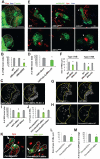

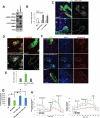
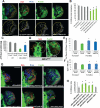
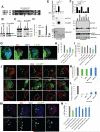
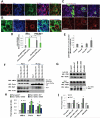

Similar articles
-
Miro clusters regulate ER-mitochondria contact sites and link cristae organization to the mitochondrial transport machinery.Nat Commun. 2019 Sep 27;10(1):4399. doi: 10.1038/s41467-019-12382-4. Nat Commun. 2019. PMID: 31562315 Free PMC article.
-
Altered ER-mitochondria contact impacts mitochondria calcium homeostasis and contributes to neurodegeneration in vivo in disease models.Proc Natl Acad Sci U S A. 2018 Sep 18;115(38):E8844-E8853. doi: 10.1073/pnas.1721136115. Epub 2018 Sep 5. Proc Natl Acad Sci U S A. 2018. PMID: 30185553 Free PMC article.
-
Deregulation of ER-mitochondria contact formation and mitochondrial calcium homeostasis mediated by VDAC in fragile X syndrome.Dev Cell. 2023 Apr 10;58(7):597-615.e10. doi: 10.1016/j.devcel.2023.03.002. Dev Cell. 2023. PMID: 37040696 Free PMC article.
-
Miro (Mitochondrial Rho GTPase), a key player of mitochondrial axonal transport and mitochondrial dynamics in neurodegenerative diseases.Mitochondrion. 2021 Jan;56:118-135. doi: 10.1016/j.mito.2020.10.005. Epub 2020 Oct 28. Mitochondrion. 2021. PMID: 33127590 Review.
-
Mitochondrial and endoplasmic reticulum calcium homeostasis and cell death.Cell Calcium. 2018 Jan;69:62-72. doi: 10.1016/j.ceca.2017.05.003. Epub 2017 May 5. Cell Calcium. 2018. PMID: 28515000 Review.
Cited by
-
Inter-organellar Communication in Parkinson's and Alzheimer's Disease: Looking Beyond Endoplasmic Reticulum-Mitochondria Contact Sites.Front Neurosci. 2022 Jun 21;16:900338. doi: 10.3389/fnins.2022.900338. eCollection 2022. Front Neurosci. 2022. PMID: 35801175 Free PMC article.
-
MIRO-1 interacts with VDAC-1 to regulate mitochondrial membrane potential in Caenorhabditis elegans.EMBO Rep. 2023 Aug 3;24(8):e56297. doi: 10.15252/embr.202256297. Epub 2023 Jun 12. EMBO Rep. 2023. PMID: 37306041 Free PMC article.
-
Cell Biology of the Mitochondrion.Genetics. 2017 Nov;207(3):843-871. doi: 10.1534/genetics.117.300262. Genetics. 2017. PMID: 29097398 Free PMC article. Review.
-
Mitochondrial Miro GTPases coordinate mitochondrial and peroxisomal dynamics.Small GTPases. 2021 Sep-Nov;12(5-6):372-398. doi: 10.1080/21541248.2020.1843957. Epub 2020 Nov 12. Small GTPases. 2021. PMID: 33183150 Free PMC article. Review.
-
Miro clusters regulate ER-mitochondria contact sites and link cristae organization to the mitochondrial transport machinery.Nat Commun. 2019 Sep 27;10(1):4399. doi: 10.1038/s41467-019-12382-4. Nat Commun. 2019. PMID: 31562315 Free PMC article.
References
-
- Bello B, Reichert H, Hirth F. The brain tumor gene negatively regulates neural progenitor cell proliferation in the larval central brain of Drosophila. Development. 2006;133:2639–2648. - PubMed
Publication types
MeSH terms
Substances
Grants and funding
LinkOut - more resources
Full Text Sources
Other Literature Sources
Molecular Biology Databases
Miscellaneous
